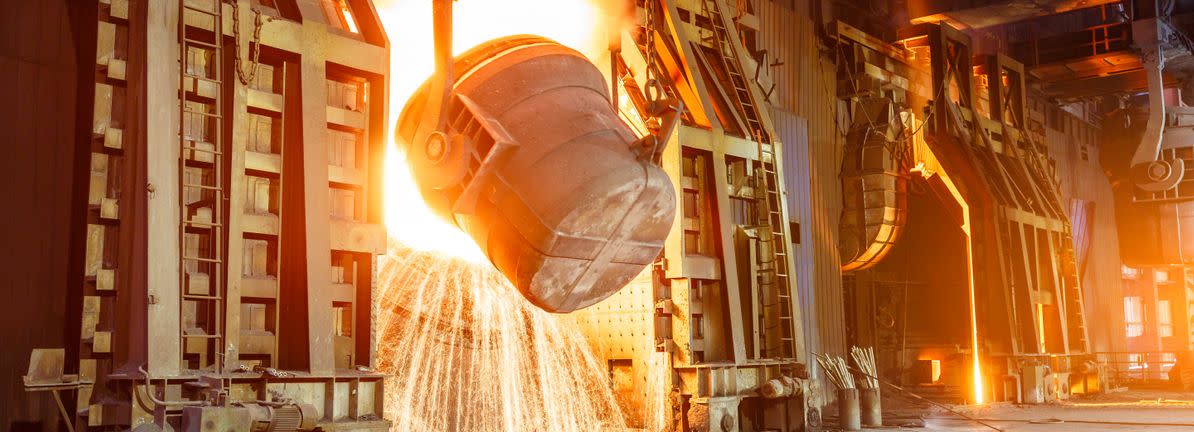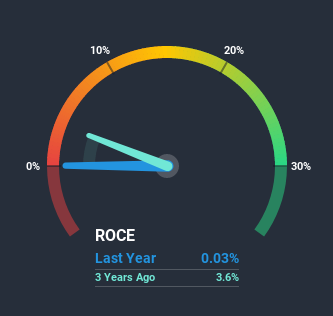What Olympic Steel's (NASDAQ:ZEUS) Returns On Capital Can Tell Us

To avoid investing in a business that's in decline, there's a few financial metrics that can provide early indications of aging. A business that's potentially in decline often shows two trends, a return on capital employed (ROCE) that's declining, and a base of capital employed that's also declining. This indicates the company is producing less profit from its investments and its total assets are decreasing. In light of that, from a first glance at Olympic Steel (NASDAQ:ZEUS), we've spotted some signs that it could be struggling, so let's investigate.
What is Return On Capital Employed (ROCE)?
If you haven't worked with ROCE before, it measures the 'return' (pre-tax profit) a company generates from capital employed in its business. Analysts use this formula to calculate it for Olympic Steel:
Return on Capital Employed = Earnings Before Interest and Tax (EBIT) ÷ (Total Assets - Current Liabilities)
0.00029 = US$162k ÷ (US$643m - US$94m) (Based on the trailing twelve months to June 2020).
So, Olympic Steel has an ROCE of 0.03%. In absolute terms, that's a low return and it also under-performs the Metals and Mining industry average of 8.0%.
See our latest analysis for Olympic Steel
Above you can see how the current ROCE for Olympic Steel compares to its prior returns on capital, but there's only so much you can tell from the past. If you'd like to see what analysts are forecasting going forward, you should check out our free report for Olympic Steel.
What Can We Tell From Olympic Steel's ROCE Trend?
We are a bit worried about the trend of returns on capital at Olympic Steel. About five years ago, returns on capital were 0.9%, however they're now substantially lower than that as we saw above. Meanwhile, capital employed in the business has stayed roughly the flat over the period. Companies that exhibit these attributes tend to not be shrinking, but they can be mature and facing pressure on their margins from competition. So because these trends aren't typically conducive to creating a multi-bagger, we wouldn't hold our breath on Olympic Steel becoming one if things continue as they have.
Our Take On Olympic Steel's ROCE
In the end, the trend of lower returns on the same amount of capital isn't typically an indication that we're looking at a growth stock. In spite of that, the stock has delivered a 23% return to shareholders who held over the last five years. Regardless, we don't like the trends as they are and if they persist, we think you might find better investments elsewhere.
If you want to continue researching Olympic Steel, you might be interested to know about the 1 warning sign that our analysis has discovered.
While Olympic Steel may not currently earn the highest returns, we've compiled a list of companies that currently earn more than 25% return on equity. Check out this free list here.
This article by Simply Wall St is general in nature. It does not constitute a recommendation to buy or sell any stock, and does not take account of your objectives, or your financial situation. We aim to bring you long-term focused analysis driven by fundamental data. Note that our analysis may not factor in the latest price-sensitive company announcements or qualitative material. Simply Wall St has no position in any stocks mentioned.
Have feedback on this article? Concerned about the content? Get in touch with us directly. Alternatively, email editorial-team@simplywallst.com.


